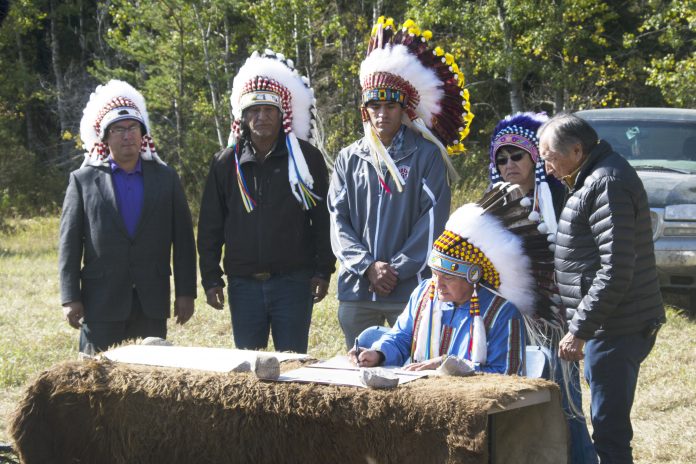
After almost a year of discussion, the Buffalo Treaty has another signatory.
On Monday, Chief Daryl Watson officially signed the treaty on behalf of Mistawasis First Nation, agreeing to help re-introduce and maintain a healthy free-roaming buffalo population.
Watson said signing the treaty is a big responsibility for the community, but one they look forward to embracing.
“The responsibility for us now as First Nations people is to look at the environment from a different perspective, not only as a place where we hunt and gather and perform ceremonies,” he explained. “Now, how do we in today’s context, relay that message to our younger people.”
Watson called the treaty a “renewal” of knowledge and understanding for First Nations people, and that renewal of will begin with the community’s youth. The community held Youth for Bison Day in June, and with Mistawasis officially signing on, more educational programs are sure to come.
“Young people are challenged with every day aspects of trying to maintain some type of optimism moving forward. I think as First Nations people, a lot of our ceremonies, our practices, have fallen to the wayside, so with this Buffalo Treaty, it’s a renewal of the knowledge and understanding that we have.”
More than 20 Canadian and American tribes have signed the treaty since it was first introduced in 2014, but none were located in north or central Saskatchewan. Introducing the treaty into the area was a proud moment for one of its founding members, academic and Alberta Order of Excellence recipient Leroy Little Bear.
For the rest of this story, please see the Sept. 20 online or print edition of the Daily Herald.

